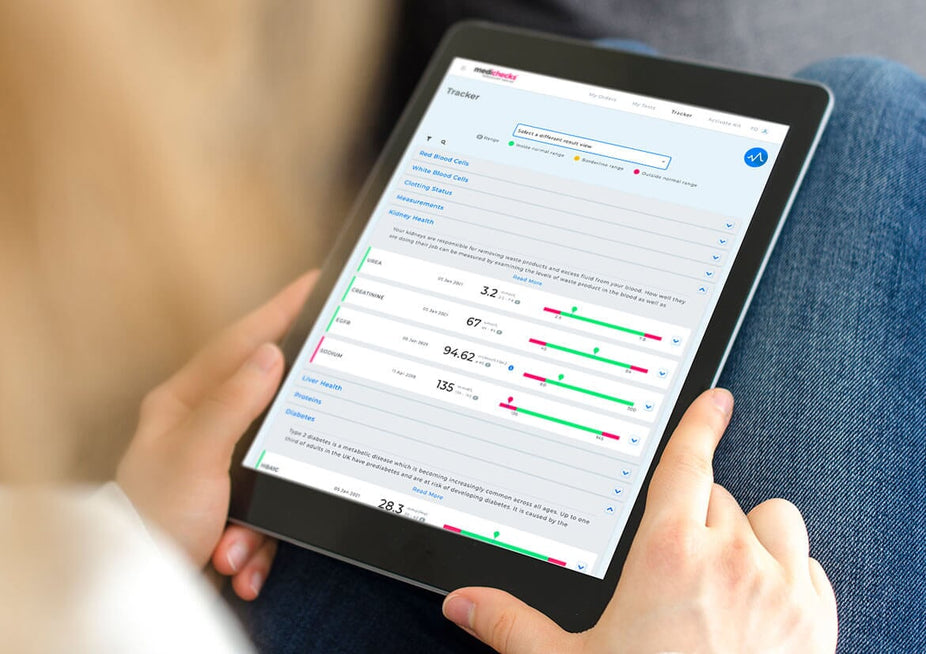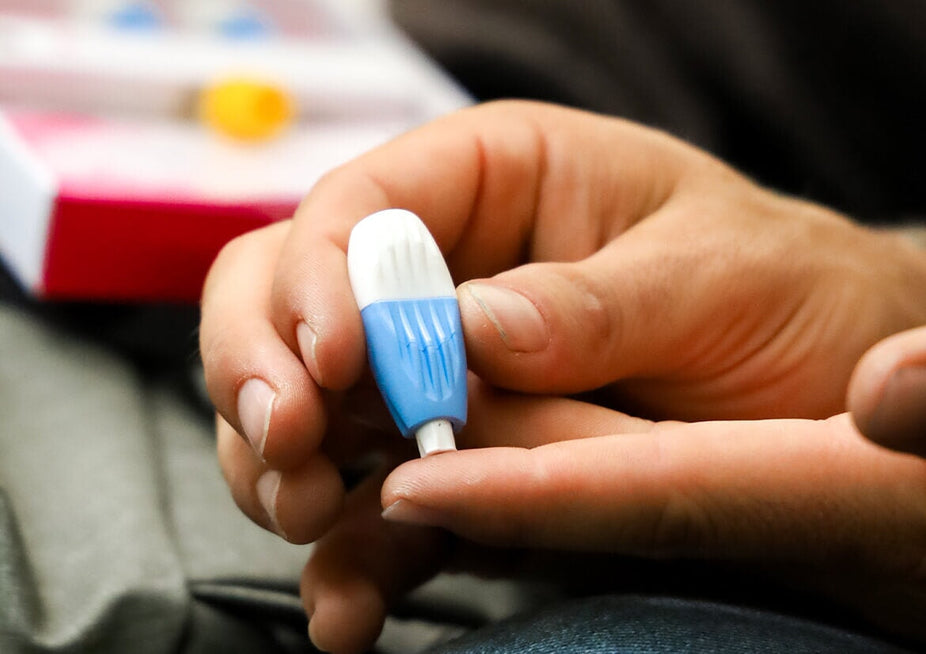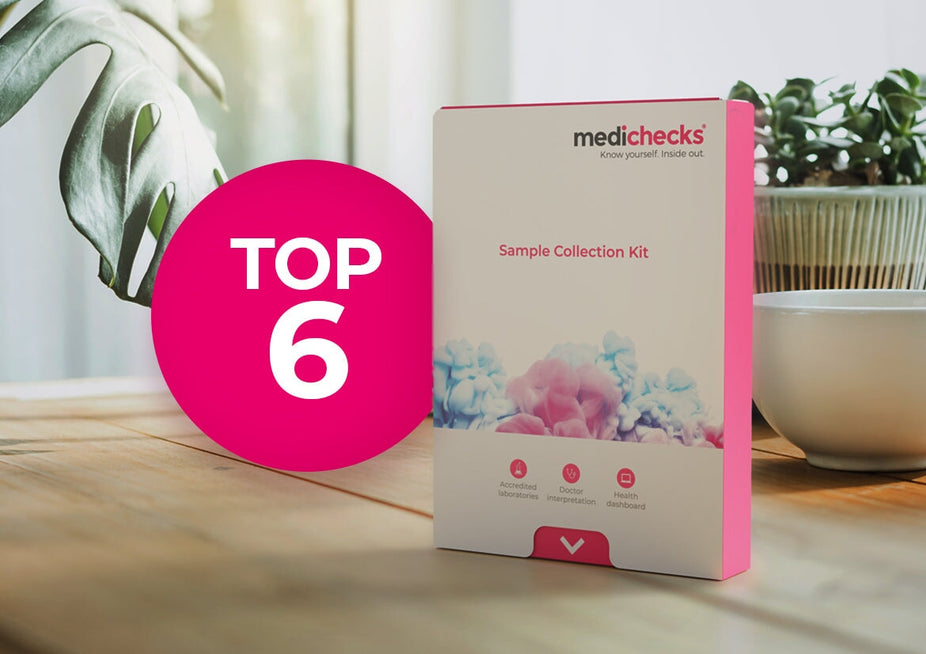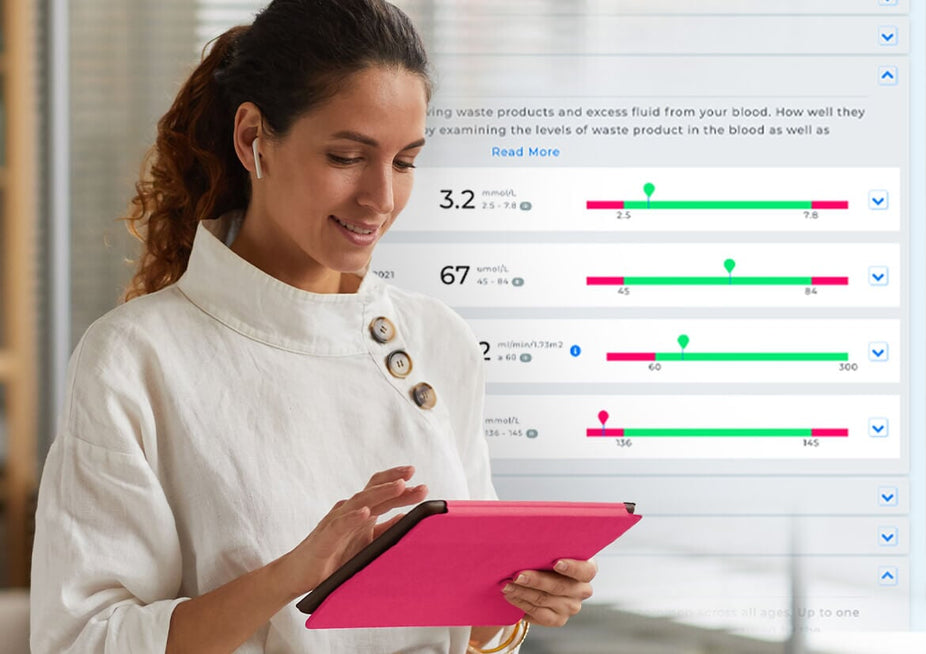What is blood and what does it do?
Read more about what blood is, the different blood types, and the main functions of blood.
Blood is an invaluable window into your health - and just a few drops of blood is enough to get a lot of information. It runs through the body every hour of every day and carries out many vital functions.
To help understand what blood is and what it does, we discuss:
- The four functions of blood
- What is blood made of?
- What is my blood type? The ABO classification system
- Blood transfusions
- RhD and pregnancy
The four functions of blood
Blood is essential for maintaining the health and life of the human body. It has many functions, including transporting nutrients and oxygen to where they need to be.
1. Transportation
Blood is the primary transportation system for the body [1]. It’s vital for carrying oxygen, nutrients, and hormones to the cells and tissues that need them.
Blood also carries carbon dioxide back to the lungs to be exhaled and waste products and toxins to the liver, intestines, and kidneys, where they can be filtered and cleared out.
Blood transports:
To cells and tissues:
- Oxygen
- Hormones
- Nutrients
Away from cells and tissues for organs to get rid of:
- Carbon dioxide
- Waste products
- Toxins
2. Fighting disease and infection
When you have an infection, your body uses white blood cells to fight it. The blood carries the white blood cells to the site of injury.
The five types of white blood cells [2]:
- Monocytes – These are the largest of the white blood cells. They can engulf and digest microbes and present bacteria and viruses to other white cells.
- Lymphocytes – Lymphocytes include B cells, T cells, and natural killer cells that operate primarily in the lymphatic system. B cells create antibodies to attack microbes.
- Basophils – Basophils release histamines in response to allergies and infection.
- Eosinophils – Eosinophils respond to parasitic infections and allergic reactions.
- Neutrophils – These are the most common white blood cells. They are usually the first line of defence against bacterial and fungal infections.
3. Clotting - prevent excessive bleeding
Clotting, also referred to as coagulation, helps prevent excessive blood loss. Your blood forms clots at the site of an injury to control blood loss.
When a blood vessel is injured, platelets and proteins in plasma work together to stop the bleeding by forming a clot over the injury. Sometimes, clots may form and need medical attention. These types of blood clots are rare in young, healthy people.
You are more at risk of a blood clot if you [3]:
- Are overweight
- Smoke
- Use combined hormonal contraception
- Have a history of blood clots
- Are pregnant or have just had a baby
- Have an inflammatory condition, such as Crohn’s disease or rheumatoid arthritis
To help reduce your risk of a blood clot, you can [3]:
- Stay active – daily walks can help
- Keep hydrated – drink plenty of water
- Aim for a healthy BMI
- Wear compression socks to improve your blood flow
- Quit smoking
4. Regulating body temperature
Blood helps regulate body temperature by absorbing heat and moving it around the body. The temperature of blood in the body is approximately 38°C, around one degree higher than body temperature [4].
Blood regulates body temperature through the plasma, which can absorb or give off heat, depending on the speed that it flows [1]. When the blood vessels expand, the blood flow slows and causes heat to be lost. When the vessels contract, the blood flow increases and reduces heat loss.
What is blood made of?
Blood is made of four main components:
1. Plasma
Plasma is the liquid component of blood and proteins used to form blood clots. It’s not to be confused with serum, which is the liquid that remains after blood has clotted (so doesn’t contain clotting proteins) [5].
Plasma contains over 700 proteins and other substances, including:
- Hormones
- Fats
- Carbon dioxide
- Vitamins
- Glucose
2. Red blood cells (also called erythrocytes or RBCs)
Red blood cells are the most common type of cell found in the blood, with each cubic millimetre of blood containing 4.6 million cells [6].
These cells contain a protein called haemoglobin that carries oxygen to cells in the body and gives blood its red colour. RBCs also transport the waste carbon dioxide back to the lungs.
3. White blood cells (also known as leukocytes and WBCs)
White blood cells are essential for good health and protecting against illness and disease, despite only accounting for about 1% of the blood [7].
When the body is in distress or under attack, WBCs rush to the scene to help destroy the threat. There are a variety of different white blood cell types, each with unique roles in the immune response.
4. Platelets
Platelets are crucial in helping the blood clot when the body is injured. If a blood vessel is damaged, it sends out signals to platelets. They respond to this signal by quickly finding their way to the site of damage and forming a blood clot.
A routine blood test called a complete blood count (CBC) or full blood count (FBC) [8] may test your platelet count.
There are several causes for low platelet count, including [8]:
- Medications
- Certain types of cancer
- Kidney infection
- Too much alcohol
A high platelet count may increase your risk of clotting, therefore increasing your risk of cardiovascular diseases. It can also decrease how well your blood clots and make you prone to bleeding.
Often, too many or too few platelets, abnormally functioning platelets, and any related conditions such as clots, strokes, and heart attacks, can be inherited.
If you have a family member with any of these conditions, it is best to speak to your doctor, or you can check your white blood cell, red blood cell, and platelet count with our Full Blood Count (FBC) Blood Test.
What is my blood type? The ABO classification system
The surface of each red blood cell is coated with a combination of sugars and proteins called antigens. The absence or presence of antigens (determined by the genes you inherit from your parents) determines your blood type.
There are many ways of classifying blood cells based on the molecules present on the blood cell surfaces but the two most commonly used are the ABO and Rhesus systems.
The ABO system includes the blood types:
- O
- A
- B
- AB
Each of these blood types belongs to the rhesus system and can either be RhD (rhesus D) positive or RhD negative [9], creating blood subtypes such as O-negative (-) and AB-positive (+).
Knowing your blood type can be lifesaving, especially if you need a blood transfusion.
Blood transfusions
A blood transfusion is when you’re given blood from a donor [10]. You may need a blood transfusion for a few reasons.
Reasons for a blood transfusion:
- Conditions that affect the way red blood cells work (e.g. sickle cell disease)
- Certain types of cancer or cancer treatments (e.g. chemotherapy)
- Severe bleeding from surgery, childbirth, or a severe accident
If you need a blood transfusion, you can only have blood types from other people with a particular blood type. Receiving blood from the wrong ABO group can be life-threatening.

The rhesus system (whether you have a positive or negative blood type) is also considered in blood transfusions as it can affect blood compatibility. Table from: https://www.thebloodcenter.org/node/18
There are five main antigens in red blood cells, but the most important is the RhD antigen. A D antigen on the red cells makes you a positive (+) blood type. If you don’t have the D antigen, then your blood type is negative (-) [11].
The D antigen is the one that is most likely to provoke an immune response – making it most likely to cause a transfusion reaction in the recipient.
RhD and pregnancy
Around 15% of the UK population are rrhesus-negative(RhD-negative), and 17% of all births in England and Wales are to RhD-negative women [12]. When an RhD-negative mother gives birth to an RhD-positive baby, it can lead to complications, including jaundice and anaemia.
However, preventative measures are available, such as extra midwife appointments alongside anti-D injections. Speak to your doctor about the risks and treatment if you are concerned.
What blood test is right for you?
If you're looking for a blood test and not sure which one is right for you, go through our test finder, or head over to our blog: top six blood tests to buy.
References
- org. 2006. What does blood do? Cologne, Germany: Institute for Quality and Efficiency in Health Care (IQWiG); Available at: <https://www.ncbi.nlm.nih.gov/books/NBK279392/> [Accessed 14 January 2022].
- rochester.edu. 2022. What Are White Blood Cells? - Health Encyclopedia - University of Rochester Medical Center. [online] Available at: <https://www.urmc.rochester.edu/encyclopedia/content.aspx?ContentID=35&ContentTypeID=160> [Accessed 14 January 2022].
- uk. 2022. Blood clots. [online] Available at: <https://www.nhs.uk/conditions/blood-clots/> [Accessed 17 January 2022].
- Del Bene VE. Temperature. In: Walker HK, Hall WD, Hurst JW, editors. Clinical Methods: The History, Physical, and Laboratory Examinations. 3rd edition. Boston: Butterworths; 1990. Chapter 218.Available at:
- NHS Blood Donation. 2022. Plasma. [online] Available at: <https://www.blood.co.uk/why-give-blood/how-blood-is-used/blood-components/plasma/#:~:text=Plasma%20is%20the%20largest%20single,700%20proteins%20and%20other%20substances.> [Accessed 17 January 2022].
- Dean L. Blood Groups and Red Cell Antigens [online]. Bethesda (MD): National Center for Biotechnology Information (US); 2005. Chapter 1, Blood and the cells it contains. Available at: <https://www.ncbi.nlm.nih.gov/books/NBK2263/> [Accessed 17 January 2022].
- rochester.edu. 2022. What Are White Blood Cells? - Health Encyclopedia - University of Rochester Medical Center. [online] Available at: <https://www.urmc.rochester.edu/encyclopedia/content.aspx?ContentID=35&ContentTypeID=160> [Accessed 17 January 2022].
- org. 2022. What Are Platelets and Why Are They Important? [online] Available at: <https://www.hopkinsmedicine.org/health/conditions-and-diseases/what-are-platelets-and-why-are-they-important#:~:text=%E2%80%9CPlatelets%20are%20the%20cells%20that,Johns%20Hopkins%20Bayview%20Medical%20Center.> [Accessed 17 January 2022].
- uk. 2022. Rhesus disease - Causes. [online] Available at: <https://www.nhs.uk/conditions/rhesus-disease/causes/> [Accessed 17 January 2022].
- uk. 2022. Blood transfusion. [online] Available at: <https://www.nhs.uk/conditions/blood-transfusion/> [Accessed 17 January 2022].
- NHS Blood Donation. 2022. The RH system. [online] Available at: <https://www.blood.co.uk/why-give-blood/demand-for-different-blood-types/the-rh-system/> [Accessed 17 January 2022].
- NCT (National Childbirth Trust). 2022. Rhesus negative blood and pregnancy: what you need to know. [online] Available at: <https://www.nct.org.uk/pregnancy/tests-scans-and-antenatal-checks/rhesus-negative-blood-and-pregnancy-what-you-need-know?gclid=CjwKCAiA24SPBhB0EiwAjBgkhqjsOsHVBQg3xeo_64ptNObRjSJzMUMX8nSgWUu_fQCPxakGeyRNvBoCWxEQAvD_BwE> [Accessed 17 January 2022].







